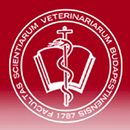Hungary - Szent István University, Faculty of Veterinary Science
| ||||||||||||||||||||
| ||||||||||||||||||||
The Faculty of Veterinary Science Budapest is the only veterinary school in Hungary. It is a state institution, and it is accredited to issue the diplomas of Doctor of Veterinary Medicine (D.V.M.), Bachelor of Science (BSc) in Biology and the postgraduate degree of Philosophiae Doctor (Ph.D.) in veterinary sciences. The Faculty has an uninterrupted teaching record for more than two centuries, making it thus one of the oldest veterinary schools in the world.
About Us
In 1787, shortly after the foundation of the world’s first veterinary school (1762, Lyon) a “Chair for Animal Healing” was established at the Faculty of Medicine in the town of Pest (now an area of the city of Budapest) to provide students of medicine and surgery with basic knowledge of animal diseases and their management, an integral part of a general practitioner’s activity at that time.
In the early 19th century, the rapid expansion of the traditional horse and cattle breeding on the Hungarian plains called for adequate institutional development. Accordingly, in 1851 the Chair for Animal Healing became independent from the Medical Faculty as the “Royal Institute of Veterinary Medicine”. In 1899, its status was changed to that of a Royal College with the right to issue the D.V.M. diploma (Doctor Veterinariae Medicinae). As an independent College, this school earned an international reputation in the first half of the 20th century. From 1960 it obtained the status of an independent University.
As a part of the countrywide reorganization of higher education in 2000 the University became the Faculty of Veterinary Science, Budapest of the newly founded Szent István University, which is also a state university. The program has been continually supervised and accredited by the Hungarian Accreditation Board.
In 1995 the veterinary school was internationally accredited by the European Association of Establishments for Veterinary Education (EAEVE). The follow-up visitation took place in 2004 with a positive outcome. The accreditation of the Budapest veterinary school was reinforced by the EAEVE and the FVE (Federation of Veterinarians of Europe).
Education
The Faculty of Veterinary Science Budapest offers undergraduate veterinary training in three languages: Hungarian, English and German. Current enrolment is about 100, 120 and 120 students for the Hungarian, German and English programs, respectively. Besides the veterinary course, the Faculty also provides university training in biology, both at Bachelor of Science (BSc) and Master of Science (MSc) level. As postgradual training the Faculty offers three-year PhD study programs in numerous topics and also specialized veterinary courses for practitioners.
The undergraduate curriculum for veterinary medicine takes five and a half years and parallels the standard curriculum found in most European veterinary programs. During the first two (preclinical) years students study Anatomy, Histology, Embryology, Biology, Chemistry, Physics, Zoology, Physiology, Biochemistry, Ethology, Agrareconomics, Botany, Biomathematics and Computer Application. English, Latin and Hungarian languages can be chosen as optional courses. During the next three (clinical + paraclinical) years, the curriculum includes Animal Breeding, Pathology, Pharmacology, Toxicology, Microbiology, Pathophysiology, Parasitology, Animal Nutrition, Internal Medicine, Surgery, Obstetrics, Food Hygiene, Forensic Veterinary Medicine, Animal Hygiene, Epizoology and State Veterinary Medicine. The 11th (practical) semester includes practical work at the Faculty
Clinics and faculty-associated institutions. Practical work at the school’s Field Stations and State Farms as well as with practitioner veterinarians is part of the curriculum.
Before the conclusion of the degree program the students must submit a thesis and take a state examination. The degree received at the Faculty of Veterinary Science, Budapest is accepted automatically by the member countries of the European Union and in several other countries of the world.
Current Research
The scientific research activity of the Faculty is divided according to the different topics between the research groups assigned to the individual departments.
Clinical Services
In 2006 a new up-to-date Small Animal Clinic was opened to provide students, staff and clients with 21st-century facilities for diagnostics and treatment.
The Large Animal clinic was opened in Summer 2001. It is located out of town, near to the city of Üllő.
View other vet schools
Location
The main campus is located in the central area of Budapest (István utca 2.), near to one of the main railway and subway stations, easily accessible by public transport. The main Field Station of the Faculty is located in Üllő, ca. 10 km from the boundary of the city.
|


